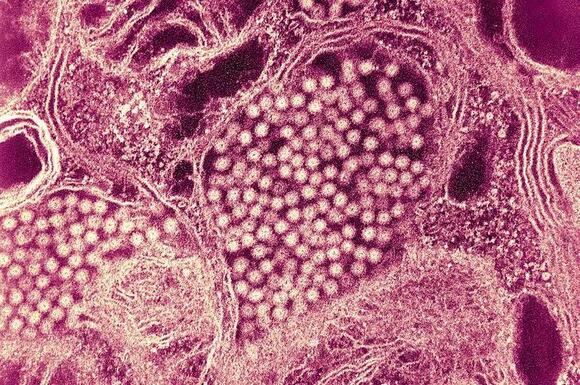Public health officials have published a new map estimating what parts of Massachusetts are most at risk for the eastern equine encephalitis virus (EEE) .
EEE is a virus spread to people through the bite of an infected mosquito. If contacted, the rare virus is very serious. 30% of people with EEE die, with death usually occurring 2 to 10 days after onset of symptoms, or much later, according to the Centers for Disease Control .
This year cases of the rare, but deadly, mosquito-borne infection have been reported in the states of Massachusetts, New Jersey, Vermont and Wisconsin, according to the CDC. In Massachusetts about half of people identified with EEE have died from the infection, according to the Massachusetts Department of Public Health.

If you cannot see the map above, click here.
Massachusetts health officials' map designates areas as either remote, low, moderate, high or critical risk of the virus, the Boston Globe reported. Remote risk areas do not usually have EEE, low risk areas could possibly have EEE occur, moderate risk areas have had EEE occur within the last year, and or there are EEE in mosquitos currently in that area.
High risk areas have conditions that are likely to lead to infection of a person with EEE, and critical areas have an excessive risk of EEE virus existing, and a person identified with an EEE infection. Falling under the critical risk are the towns of Sutton, Oxford, Douglas and Webster, officials said.
The surrounding towns of Dudley, Northbridge, Uxbridge, and Middleborough, Carver, and Plymouth are under high risk, while the towns of Southbridge, Charlton, and Auburn are under moderate risk. A majority of Massachusetts remains at remote or low risk of EEE infections, according to officials.

The four Massachusetts towns under critical risk are currently under voluntary lockdowns after a person who lives in Oxford was infected with EEE. Oxford's Board of Health voted on Wednesday to support the recommendation for a voluntary lockdown, which stipulates that residents should remain indoors after 6 p.m. to minimize the chances of contracting the disease through mosquito exposure.
That lockdown is in effect through Sept. 30, the public health advisory, which was shared with Fox News Digital, reveals. Then, starting Oct. 1, the recommendation changes to a curfew of 5 p.m., which will remain in effect until the first hard frost of the season.
This comes after 41-year-old New Hampshire resident Steven Scott Perry died from EEE. His family confirmed in his obituary Perry passed away at Massachusetts General Hospital on Monday Aug. 19 after falling ill with “a sudden and rare brain infection.” He was healthy and had no underlying medical conditions, his family told affiliate NBC Boston.
A funeral director speaking for the family confirmed that the cause of Perry’s infection was EEE . “Steven will forever be in our hearts, remembered for his warmth, spirit, and love he shared with all who knew him,” Perry’s family said in his obituary.
 Most Popular
Most Popular


Comments / 0